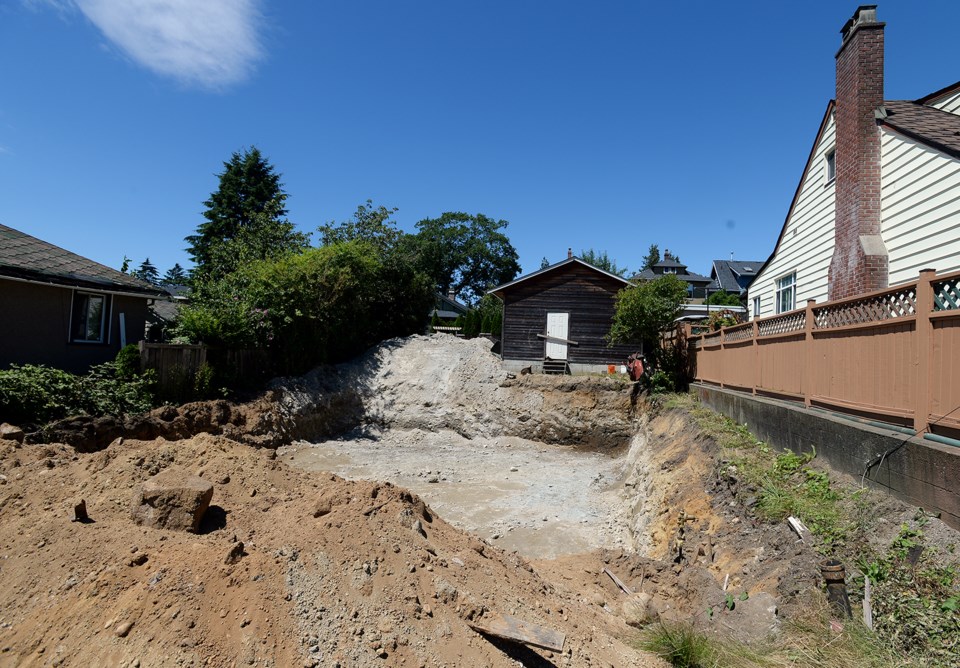Now you see it, now you don’t.
Less than two weeks after city council rejected a heritage revitalization agreement for an 1891 home at 1031 Sixth Ave., the house was demolished.
Neighbours and council members weren’t keen on the property owner’s plan to move the house to the rear of the 4,385-square-foot lot and build a new home on the front of the property.
“If we turn this down we may be sounding the death knell for this house because he certainly has a right to demolish if he so chooses,” Coun. Lorrie Williams said at the June 20 council meeting. “I would like to save the house.”
A staff report stated the owner bought the home in 2014 with the intention of restoring the outside and renovating the inside of the McLaughlin house. The owner explored various options that would have resulted in the expansion of the house or the construction of a new laneway house through a heritage revitalization agreement, but none met his family’s needs or schedule for construction.
Jackie Teed, the city’s manager of planning, said the applicant had already submitted a building permit application when the city requested he try for a heritage revitalization agreement, and he agreed, even though the application was nearing issuance. When the heritage revitalization agreement failed, the applicant requested the city issue the building and demolition permits, which were done the following day, as they had already been through due process at city hall.
“There was no protection on the house. It was not designated heritage, and council had chosen not to put temporary protection on it. Temporary protection is a tool that is used to ‘buy time’ to work with an applicant to determine if the house may be saved through an HRA or otherwise. As the applicant was willingly working with the city to achieve the proposed HRA, the intent of temporary protection was already being achieved,” Teed said. “Once council declined to give the HRA proposal third reading, the applicant only required a building permit in order for the demo permit to be approved.”



